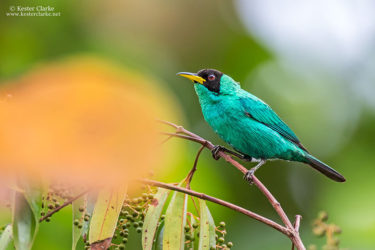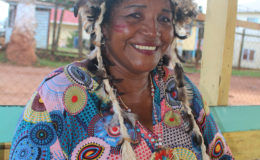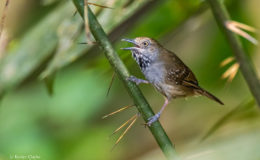
Green Honeycreeper
he Green Honeycreeper is a forest canopy species but it often descends along forest edges and clearings to take fruit and sometimes nectar.

he Green Honeycreeper is a forest canopy species but it often descends along forest edges and clearings to take fruit and sometimes nectar.
Evolvulus glomeratus commonly called Blue Daze originated in Brazil and Paraguay, in South America.

In response to last week’s column about how it’s possible to achieve a slim waistline by shedding extra belly fat while maintaining curves so to speak, I received some emails from concerned women who would like to just ‘tone up’ without lifting.

Cultural change continues to be a very interesting study. We have from time to time commented on factors of change in Guyana and the Caribbean and have remarked at what has been observed in some cultural traditions.

Bobby Fischer, America’s most successful chess player, contested a fair number of chess blitz games in Washington Square Park, Manhattan.

If you’re looking for a different way of cooking potatoes this Diwali, then try this South-Indian version that is generally served with Poori (which I talked about yesterday in Tastes Like Home.

Hi Everyone, One of the most requested recipes I get is for Poori.

Здравствуйте (Hello) This is literally the only word I have been able to pick up in my first two weeks in Russia.

School had just let out for lunch when the World Beyond Georgetown arrived in Mabaruma, one of this country’s newest towns.

After enduring years of abuse at the hands of her alcoholic husband, Roselyn (not her real name) knew that it was time to leave him when his actions resulted in their 15-year-old son standing over him with a cutlass aimed at his neck.
What does solidarity between nations mean in the early twenty first century?

Most important drivers Guyanese households spend the most money in the economy with the result that their spending contributes the most to the gross domestic output (GDP) each year.
The President’s address to the National Assembly was disappointing. The expectation was that he would use the occasion to announce the Government’s legislative agenda wrapped around policy initiatives for the next parliamentary year.
When one thinks about it, the concept of “Government” is a strange one for it assumes as its fundamental premise that certain men and women – human beings like you and me – can and should be allowed to take upon themselves the right to direct the rest of us what to do, presumably for our own good.

Introduction Today’s column addresses the “cost-price relation”, likely to emerge as Guyana transforms its oil and gas “discovery” into an industrial success.

This past week, even as we mourn the loss of calypsonians Lord Canary here, and of King Austin in Trinidad, the subject of calypso as an art form is again getting traction with comments by Trinidad & Tobago President Anthony Carmona delivering the feature address at the Top 20 Stars of Gold Show presented by the country’s National Action Cultural Committee (NACC).

The Brown-bellied Antwren forages in the undergrowth of moist lowland forests for insects hidden among leaves, often as part of a mix-species flock of other typical antbirds.

We are currently in the tail end of the avocado/pear season.

“Emmerson how can I lose weight on my stomach and keep my curves?

Among the honours, recognition and tributes paid to Malcolm Corrica, MS, popularly known as Lord Canary, (March 21, 1937 – October 10, 2016), is a publication of his biography written by Allan A Fenty.
The ePaper edition, on the Web & in stores for Android, iPhone & iPad.
Included free with your web subscription. Learn more.